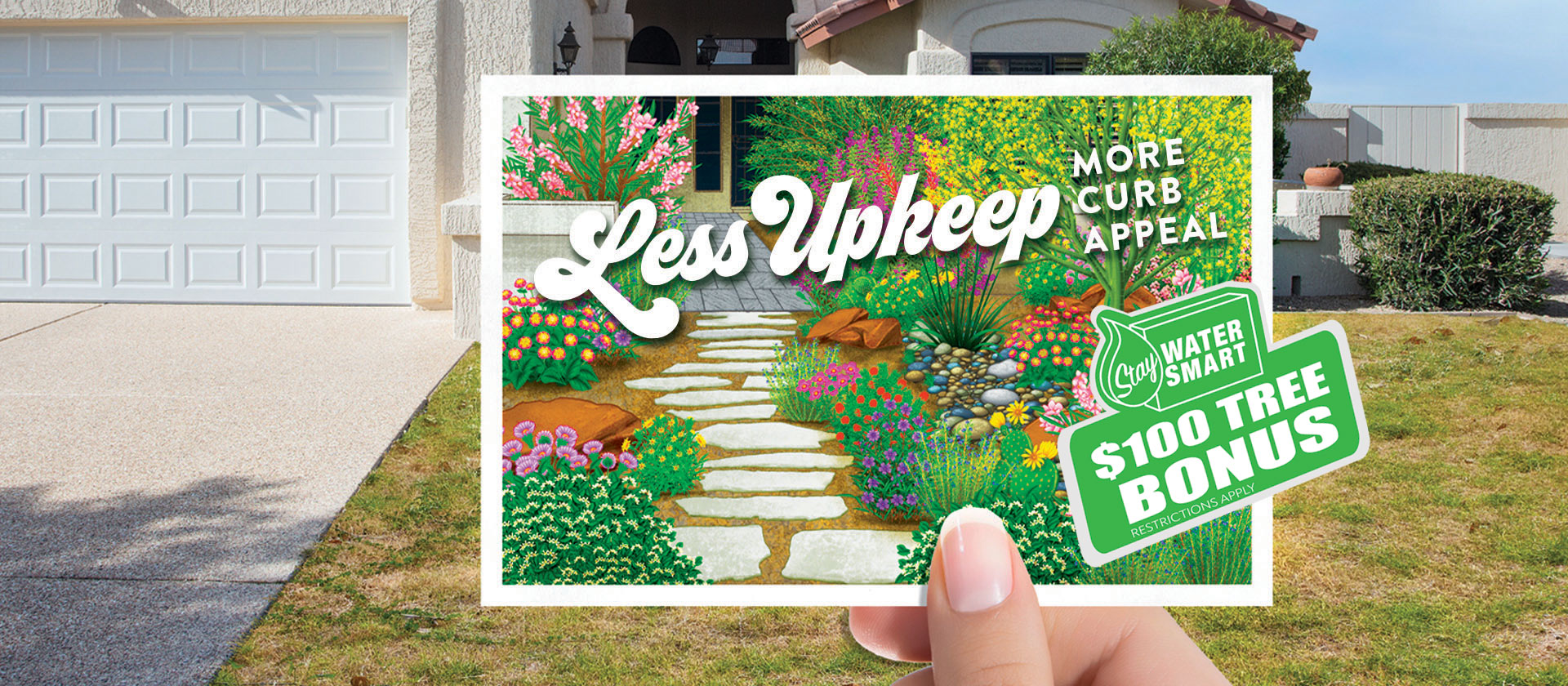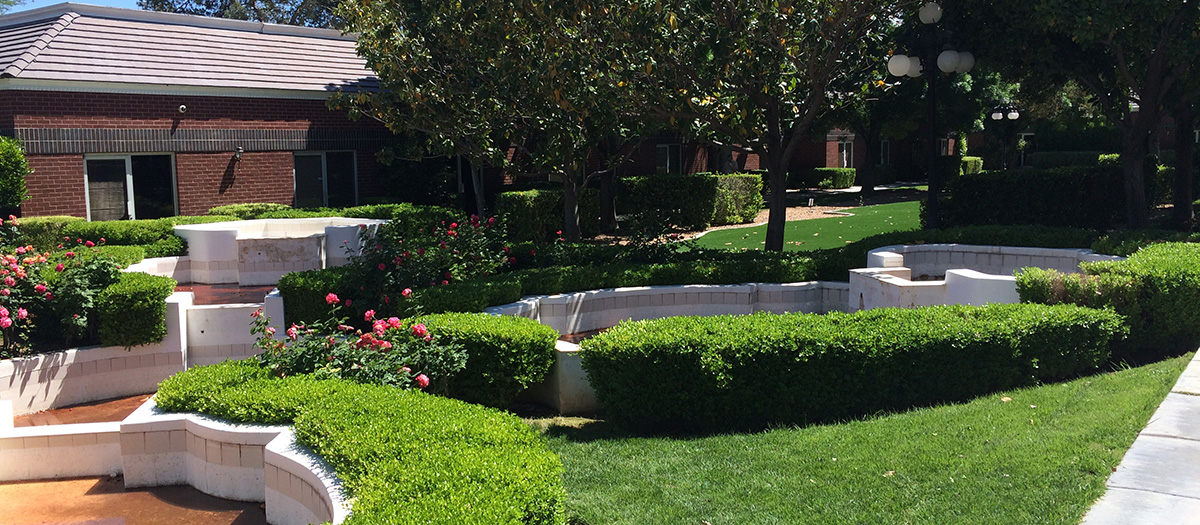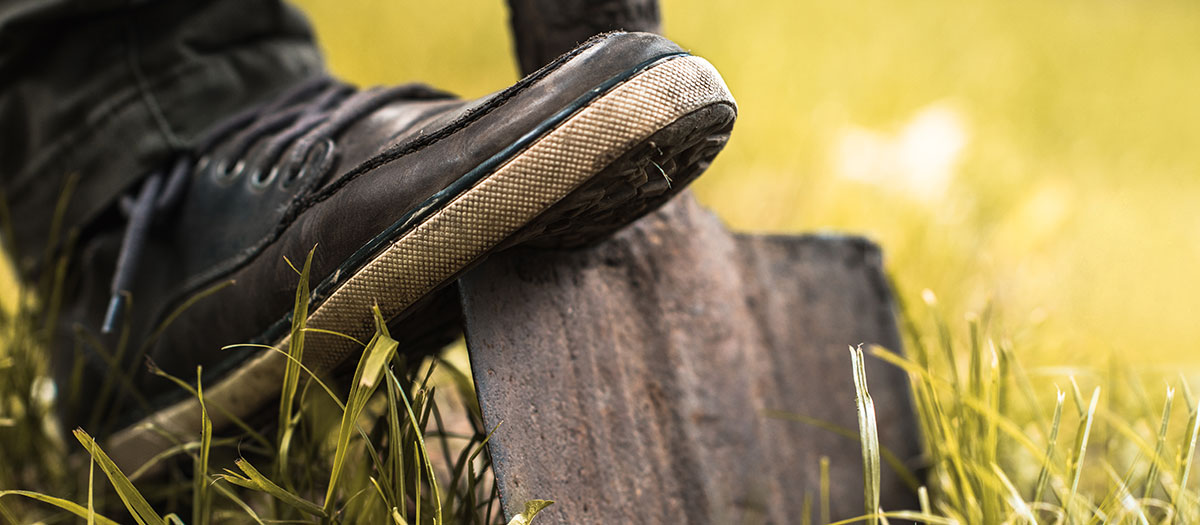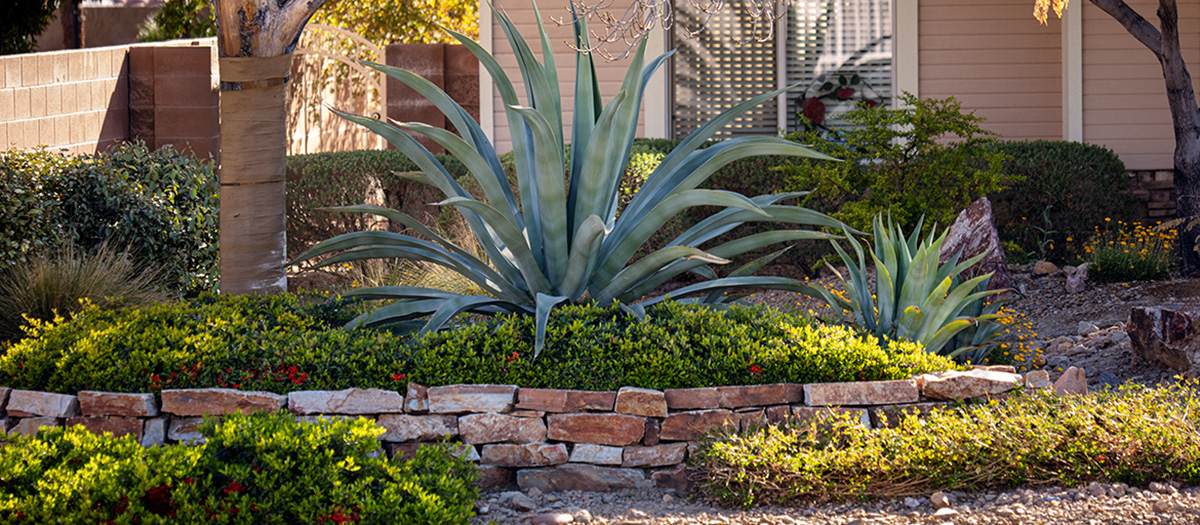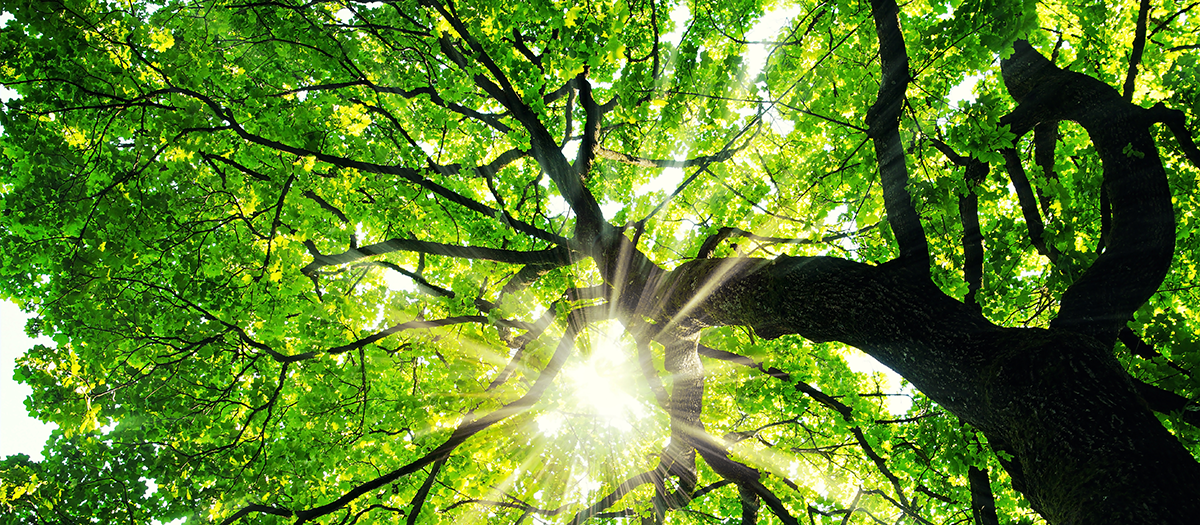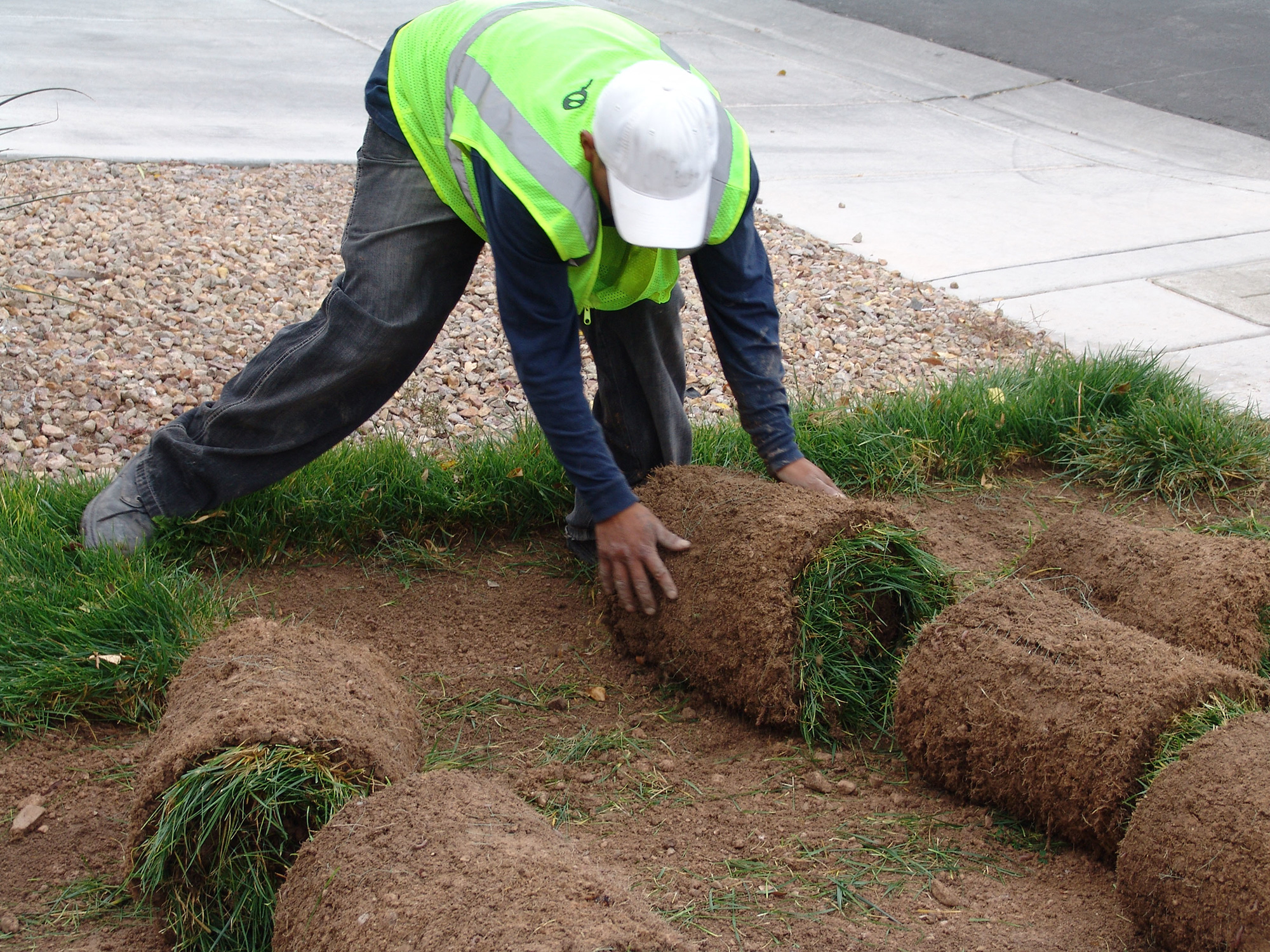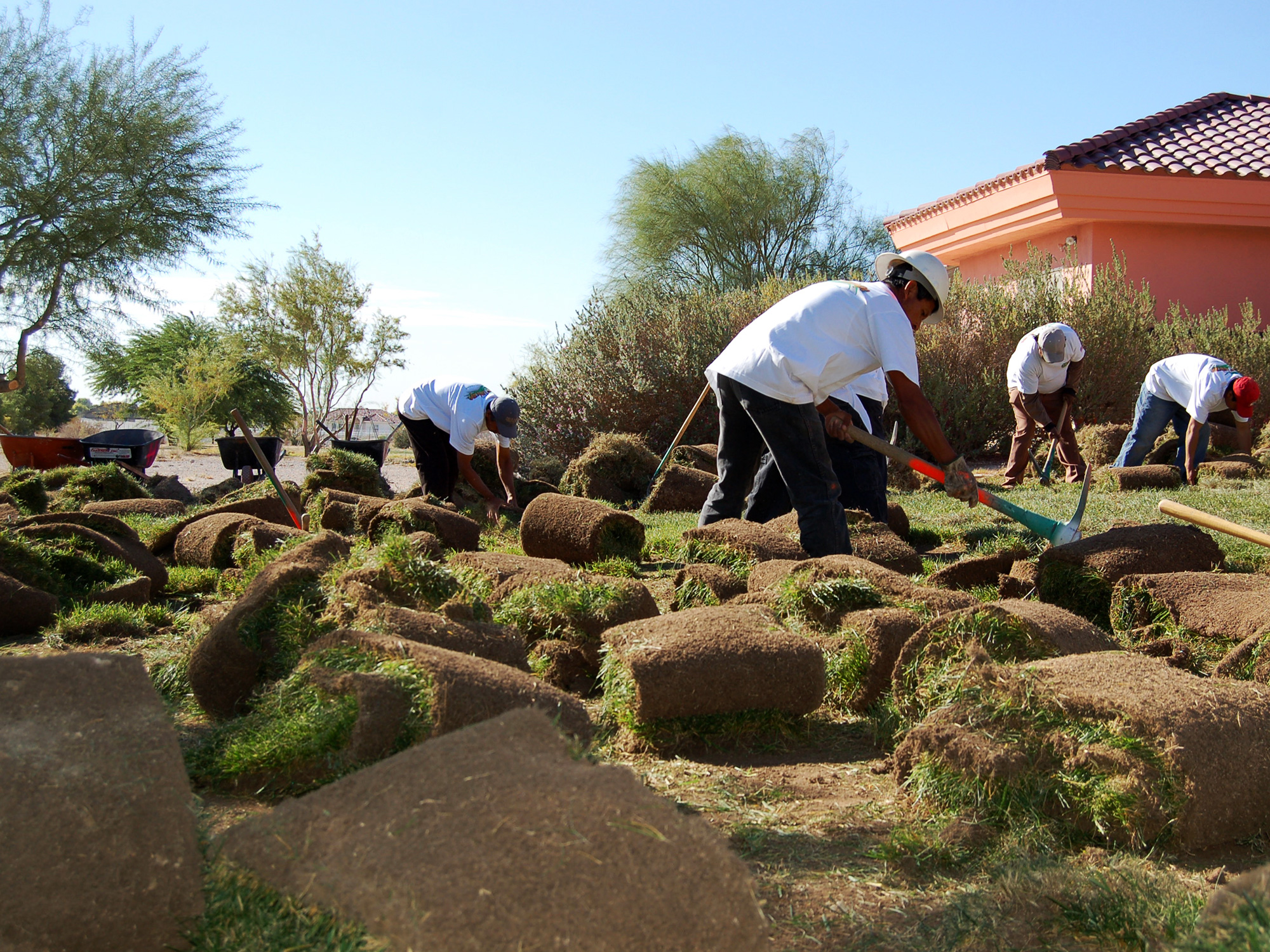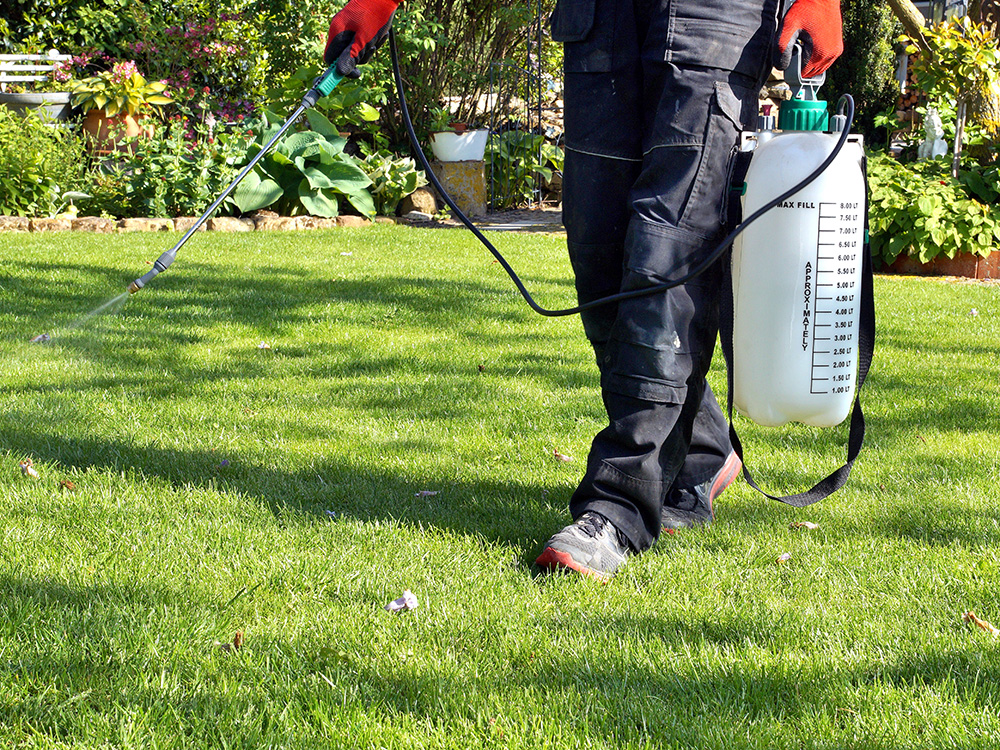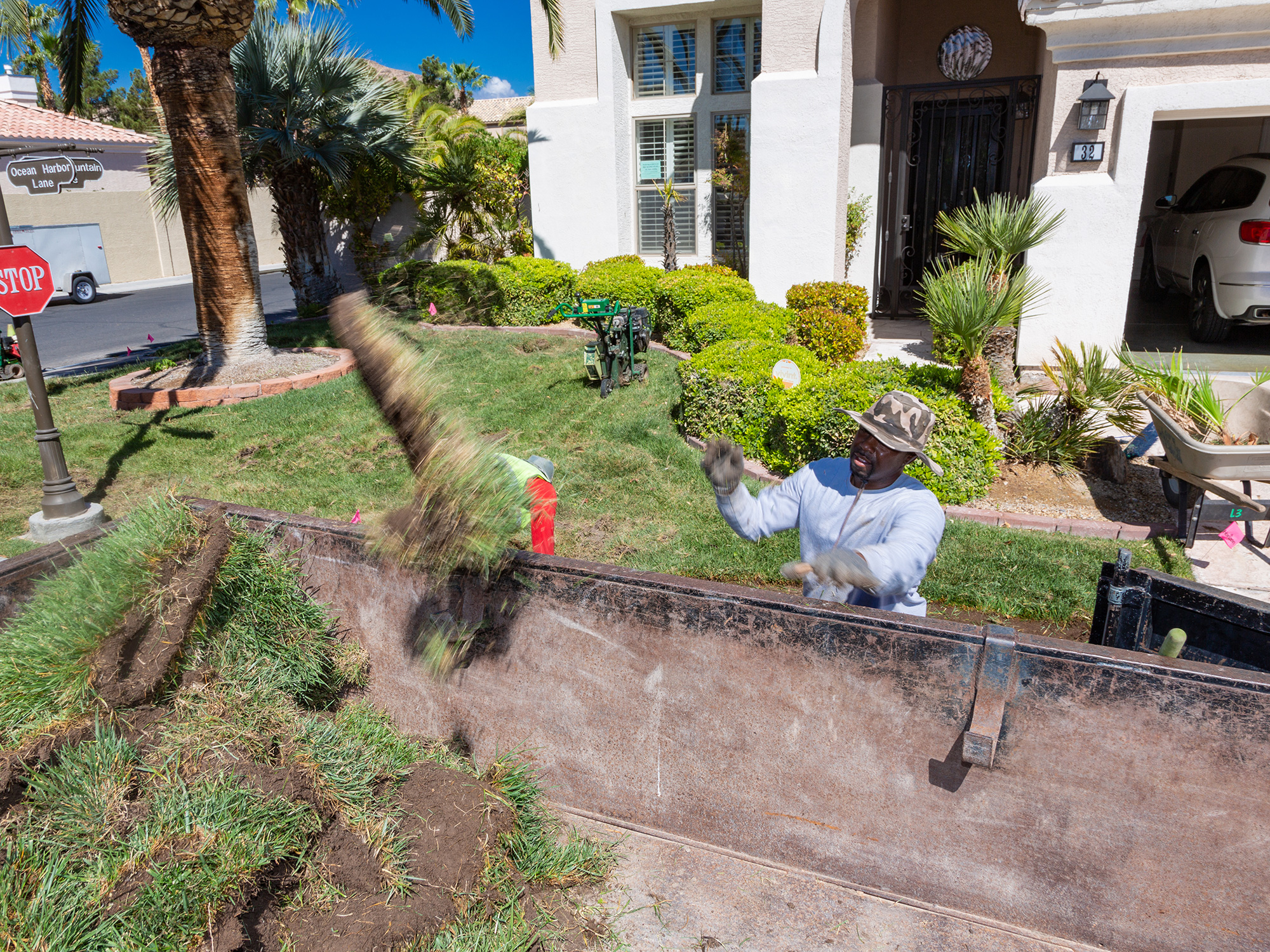The biggest use of our community's water supply is outdoor landscape watering, and with Lake Mead in shortage conditions, we all need to do our part to help conserve water!
Whether you do it yourself or hire a contractor, the Southern Nevada Water Authority will rebate residential properties, businesses, HOAs and multifamily properties for grass removed and replaced with desert landscaping.
Learn more about:
- Rebate benefits and amounts
- The rebate process and program conditions
- Helpful resources to use during your landscape conversion, including tree care tips
How to apply
Ready to ditch your thirsty grass? Apply for the Water Smart Landscapes Rebate online!
Please note: After your application is completed, you must participate in a pre-conversion site visit. Removing your lawn without our approval will make your conversion ineligible. Rebate applications tend to increase in the spring and fall, which can increase wait times for site visits. Please account for this in your project planning.
💧The Water Smart Landscapes rebate program has helped the community upgrade more than 241 million square feet of lawn to water-efficient landscaping, saving the community 203 billion gallons of water since the program began in 1999.💧
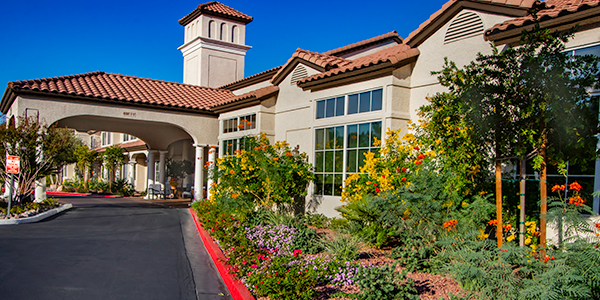
Business, HOA, and multifamily properties
Take advantage of the Water Smart Landscapes rebate to convert water-thirsty grass to desert landscaping and receive:
- For functional turf: $3 per square foot of grass removed and replaced with desert landscaping up to the first 10,000 square feet converted, and $1.50 per square foot thereafter per property.
- For non-functional turf: $2 per square foot of grass removed and replaced with desert landscaping up to the first 10,000 square feet converted, and $1 per square foot thereafter per property.
View the definitions of functional and non-functional grass.
Smart business owners will quickly realize that converting to a water-smart landscape makes good business sense. A savings of 825,000 gallons of water per year is projected for the average 15,000 square-foot conversion to water-smart landscaping.
What you'll save:
- Reduced repair costs for water damage related to sprinklers
- Reduced pests and pest-control costs
- Lower cost for the replacement of aging and/or damaged turf and sprinkler parts
- Decreased risk of water waste fees
- Increased opportunities for risk management and reduction in liability
What you'll spend:
- Project design fees
- Permit costs
- Cost to remove existing landscape elements that will not be a part of your new design
- Project installation, including plants, irrigation, hardscapes and other elements
For more information, including terms and requirements, view the program conditions.
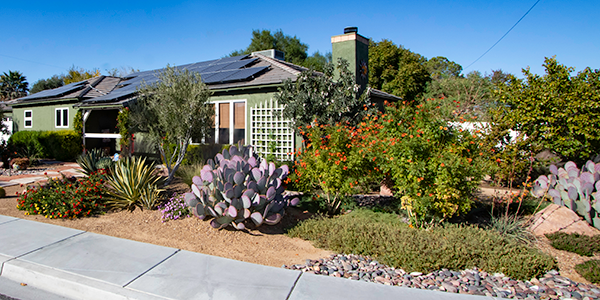
Residential properties
Whether you do it yourself or hire a contractor, the Southern Nevada Water Authority will rebate single-family residential properties $3 per square foot of grass removed and replaced with desert landscaping up to the first 10,000 square feet converted, and $1.50 per square foot thereafter per property, per fiscal year (July 1-June 30).
In addition to the rebate itself, water-smart landscaping has many benefits including:
- Lower water usage (and potentially lower bills!)
- Less maintenance
- Decreased risk of water waste fees
Certain restrictions apply to well owners. For more information, including terms and requirements, view the program conditions.
⭐Get an ever bigger rebate⭐
Some water providers, including the Las Vegas Valley Water District and the City of Henderson, offer an additional incentive on top of the $3 per square foot offered by SNWA.
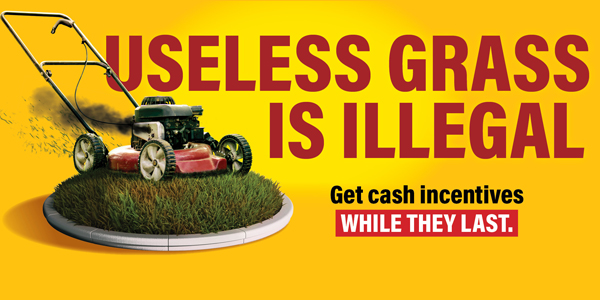
NOTE: Business, HOA, and multifamily properties have a legal requirement to remove nonfunctional grass! A law prohibits the use of Colorado River water to irrigate nonfunctional grass found around Southern Nevada business complexes, along streets in HOA communities, and in traffic circles and medians, beginning in 2027.
🌳Money DOES grow on trees!🌳
As part of the Water Smart Landscapes rebate, our Tree Enhancement Program pays new participants a bonus of $100 for every new tree installed (up to 100 percent canopy coverage).
The Tree Enhancement Program requires installation of new living trees selected from the list of qualifying trees.
- Apply online. If you have questions about the program, please contact us.
Business, HOA, and multifamily properties:
To complete your application, you will need:
- A notarized Authorized Signer Agreement, completed by the person who has signing authority for the property and who will sign all documents related to the conversion.
- A general idea of the conversion area, to be drawn on a map as part of the application.
- Apply online. If you have questions about the program, please contact us.
Please note: You must participate in a pre-conversion site visit before removing your lawn. Starting without our approval will make your conversion ineligible.
After your application is submitted, we will visit the property to determine whether it meets eligibility requirements, including having live grass and an active irrigation system, and we will measure the proposed conversion areas.
Please note: Rebate applications tend to increase in the spring and fall, which can increase wait times for site visits. Please account for this in your project planning.
For business, HOA and multifamily properties, if the conversion area is greater than ¼-acre in size (10,890 square feet), you must secure written approval from the local jurisdiction's planning department as a condition of eligibility. Email approval is sufficient, and we will make the planning department aware of your pending request so they know to expect it.
Now's the time to get to work! You have 12 months to complete the conversion project. Upon request and at its discretion, the SNWA may grant an extension of up to 90 days.
- Looking for inspiration? Check out landscape designs and plans for residential, business, HOA and multifamily properties.
- Use our landscape installation tips.
- Should you decide to hire a professional and not do it yourself, consider our list of Water Smart Landscaper program participants.
- View the Regional Plant List, List of Qualifying Trees for the Tree Enhancement Program, and use our Plant Search tool to help with plant selection. Be sure to use the Plant Search's shopping list feature!
- Don't forget about the Tree Enhancement Program which gives participants a $100 per tree bonus for every new tree installed (up to 100 percent canopy coverage). View full requirements in the Tree Enhancement Program Conditions.
Notify us when you've completed your conversion. We will inspect the landscape (usually within 10 business days) to ensure it meets program conditions including a drip irrigation system, proper canopy coverage, etc. We'll also verify the area eligible for the rebate, in case the size differs from what was described at the beginning of the process.
If program conditions are not met, the remainder of the 12-month completion period or 60 days (whichever is greater) will be provided to take corrective action.
Following a successful post-conversion site inspection, a conservation easement must be signed and returned by the homeowner or property representative.
The easement is intended to prevent you from reinstalling grass, converting the area to a swimming pool, etc. and commits you to either maintaining the conversion in perpetuity or reimbursing the SNWA the full amount of the incentive plus administrative fees.
Program conditions
Read the program conditions carefully before applying for the program.
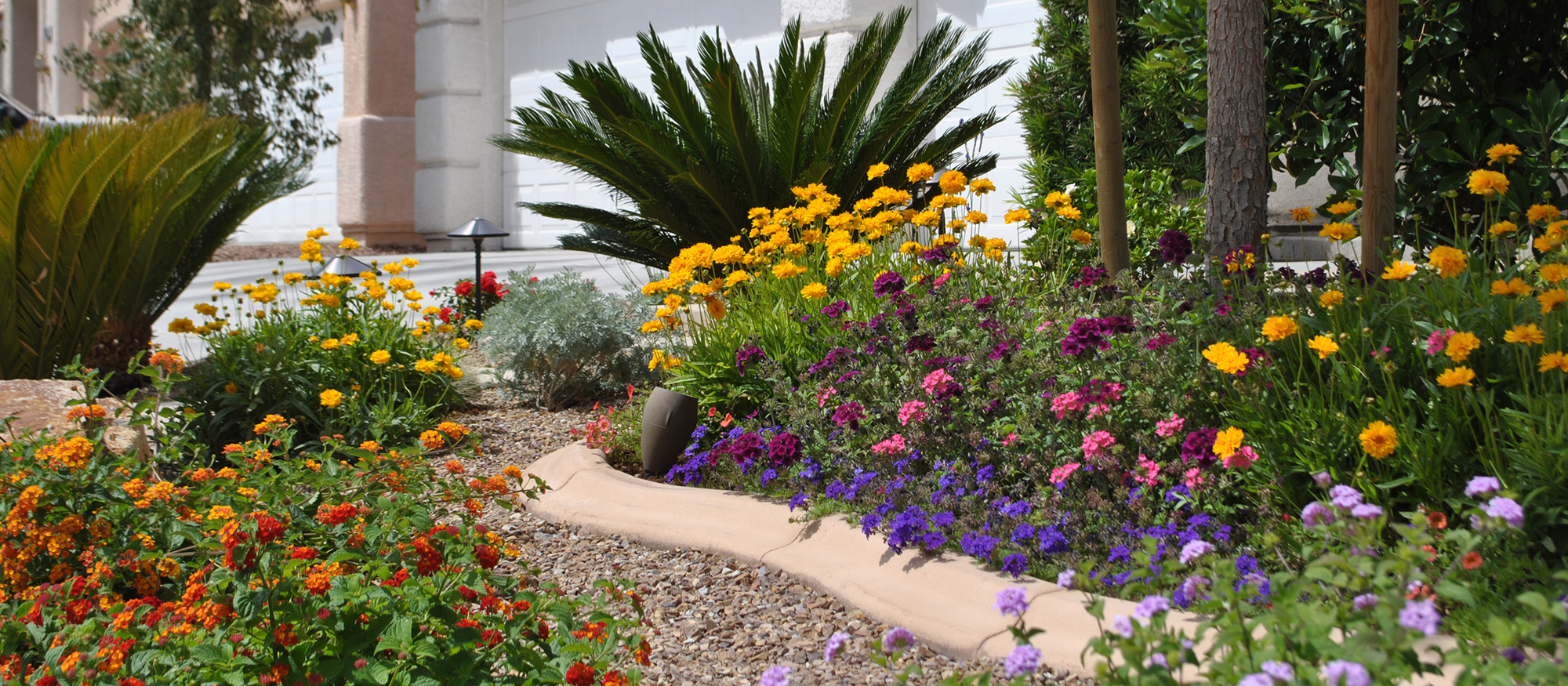
Browse designs
Looking for inspiration? We've got you covered.
Check out our sample landscape designs and plans for residential, business, HOA and multifamily properties.
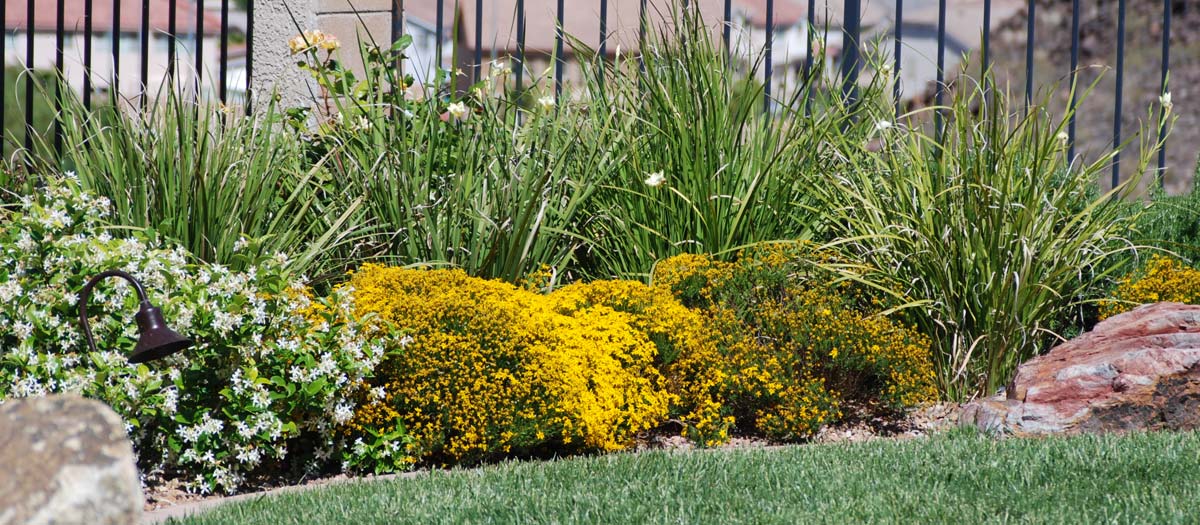
Find plants
To help with plant selection, view the Regional Plant List, consider planting Tree Enhancement Program trees, and use our plant search tool. Be sure to use the plant search's shopping list feature!
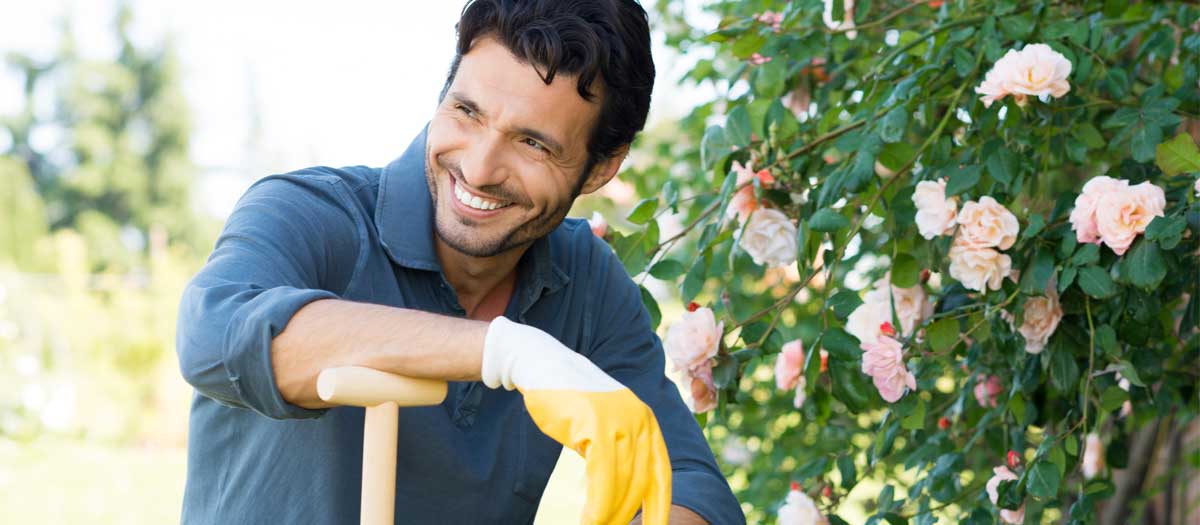
Hire an expert
Should you decide to hire a professional, consider our list of Water Smart Landscaper program participants. These contractors learn and promote water-saving irrigation and landscape design for homes and businesses.
Frequent questions
Not sure if the rebate covers artificial turf? Is your HOA telling you xeriscape isn't allowed? Check our frequently asked questions to find out more about these and other rebate issues.
Can I receive credit for replacing my lawn with artificial turf?
We will accept artificial turf as a substitute for mulch (instead of rock or bark). However, it must be permeable (allowing air and water to pass freely) and all other program conditions must be met, including the 50 percent plant coverage requirement, low-flow irrigation, etc.
Do I get credit for putting in a concrete patio, curbing, walkways or an extension to my driveway?
No. You can incorporate all of these into your landscape, but we will not include these areas in determining your incentive. We will subtract these nonpermeable areas from those that meet our conditions when determining your incentive.
However, if the patio or walkway is brick or flagstone with sand grouting (not concrete) allowing air and water to pass through, these could be included in your conversion area, assuming all other program conditions are met.
How much does a typical conversion usually cost?
Most of our program participants, the rebate will pay about half the cost of a good quality landscape conversion and could cover as much as 75 percent of some customers' conversion costs. For money-saving tips, attend a free class at the Botanical Garden at the Springs Preserve. When considering the overall financial impact of your new landscape, don't forget to consider that your water and maintenance costs will be significantly reduced. SNWA's studies show the average annual household water and maintenance costs of program participants decreased by more than one-third.
Are there financing options?
Most banks offer home improvement loans that can be used for landscaping. Since SNWA issues your rebate check in less than 60 days after you complete your project, you can apply it against the principal of the loan. Some landscapers offer financing plans to allow you to pay the final balance for your project after you receive your rebate check.
Is the rebate check considered taxable income?
Rebates may be considered taxable income. We recommend that you consult your tax advisor for further information.
Won't water-smart landscaping make my house hotter and run-up my power bills?
No. Shade is the key to keeping you cool in the desert. Shading keeps areas 10 to 25 degrees cooler. Lawns feel cool because so much water is evaporating from them. There are dozens of water-efficient trees and vines that can be used to shade south and west exposures from our relentless desert sun. A water smart landscape with very dense plantings uses less than half as much water as a lawn.
Why do I need a filter and pressure regulator?
The emitters on your drip irrigation system have very small openings for the water to pass through. The filter prevents sediment from clogging your emitters, ensuring your plants will get the correct amount of water. A pressure regulator keeps the irrigation system at the manufacturer's recommended pressure (usually between 20 and 40 pounds per square inch). Not installing a pressure regulator may cause fittings and lines to fail, creating wasteful breaks and leaks in your system.
I turned off the water on my grass already and it has started to die. Can I still qualify for the program?
Since the purpose of the program is to reduce existing water demand, you must be currently maintaining a grass lawn. Do not remove the grass until after SNWA completes the pre-conversion visit or your conversion will be ineligible. An SNWA staff member must validate the turf areas before you start your project.
Can I receive credit for replacing my high water-use grass with a low water-use grass?
No. This program provides an incentive to convert grass to alternative types of landscaping, including trees, shrubs and groundcovers. These use less water than even the lowest water-use grass. However, the Water Authority does encourage homeowners to use low water-use grass in those areas where grass is needed or desired.
If I have kids and a dog, how do I incorporate water smart landscaping in my yard?
One of the seven principles of water smart landscaping is functional lawn areas. You don't have to eliminate your entire lawn to participate. Some conversion projects simply involve creating a buffer area around the edge of an existing lawn. To determine where you might have nonfunctional turf, ask yourself: "When people walk on this grass, are they most likely to be pushing a lawn mower?"
What if my HOA requires me to keep grass in my yard?
Nevada Revised Statutes prevent a homeowners' association (HOA) from restricting the installation of water-saving landscape. In some cases, your board may not be aware of the potential conflict between their covenants and the law. In every case, your HOA is still likely to have some say in the design of your landscape. To avoid problems, be sure you follow all appropriate HOA policies that may apply to your new landscaping project.
What is mulch and why do you require it?
The most common types of mulch are decorative rock or bark. Mulch helps maintain the moisture level and the temperature of the soil. Without mulch, wind and heat would pull the moisture out of the soil and more water would be needed to keep your plants healthy. Also, the temperature of the soil would constantly fluctuate causing a lot of stress to your plants. Some of the other benefits include the reduction of weed growth, erosion and certain insect diseases.
What plants can I use in my water-smart landscape?
The Water Smart Landscapes program does not require particular plants, only that when fully mature, the plants cover at least 50 percent of the converted area. You can use any plant you want to meet this requirement, but we encourage the use of drought-tolerant plants. You also should consider keeping your existing trees because they provide shade to your home and landscape.
We offer a list of the most common plants used in Southern Nevadan landscapes. The list is sorted by both plant common names and botanical names. The list includes the mature size of each plant in square feet to help ensure you meet the 50 percent canopy coverage requirement.
You also should check out our interactive plant search feature. This resource allows you to search for plants based on needs such as sunlight exposure, season of bloom and water requirements.
Do I get credit for removing my high water-use plants?
No. Our program is focused only on the removal of grass. However, you can water most shrub beds more effectively by converting the irrigation system to drip irrigation.
I have many plants surrounding the grass that I'm removing. Will these plants count toward the 50 percent canopy requirement?
No. We will only count those plants that are either currently planted in the grass or those that are added to the area where the grass is to be removed, such that the trunk or stem of the plant is in the converted area.
Why do you require plants?
This program encourages the use of water efficient landscaping, and we want that landscape to be attractive in order to encourage others to do the same. Trees, shrubs and groundcovers provide shade, absorb carbon dioxide, supply oxygen, reduce soil erosion, give wildlife a home, decrease energy use, lessen noise pollution, lower air temperatures, reduce storm water run-off and a host of other benefits.
Do plants have to cover 50 percent of the conversion area when you come and inspect my landscape?
You can choose plants at any size you like. We always use the "full mature" values to determine plant coverage.I don't like the desert plants and rocks.
Water-smart landscaping is so much more than rocks and cactus. There are more than 500 plants that are resilient enough to tolerate our harsh environment and soils with a little help. With proper design and plant selection, you can accomplish almost any look or feel and still save water.
What is a conservation easement?
Easements are granted by the property owner and define certain limitations on land use. This Conservation Easement restricts only those portions of your property where you received an incentive for landscape conversion. The easement "runs with the land," meaning that all owners of the property must abide by the terms and is similar to the type of covenants property owners agree to in most homeowners' associations.
What if I want to modify my landscape?
You may make changes to your landscape (such as replacing or moving plants, changing mulch materials or even undertaking a complete redesign), provided you do not install irrigated lawn or grass, spray irrigation systems, swimming pools, ponds or other bodies of water or water features in any portion of the converted area. You do not need to notify the Water Authority of changes that do not substantially alter the character of the conversion area.
Why is the easement required?
The Southern Nevada Water Authority issues bonds to support conversion rebates. The agreement assures the water savings from the project will be sustained in perpetuity, producing a permanent community benefit.
Who keeps track of this information?
These documents will be recorded with the Clark County Recorder. If the property is sold, the easement can be identified through a title search and disclosed to a buyer. A copy of the recorded documents will be available to you for your personal records. The Water Authority also will maintain a copy of these documents in its business records.
How long will the easement be in effect?
The easement applies in perpetuity. You and anyone who owns the property in the future will be prohibited from installing irrigated lawn or grass, spray irrigation systems, swimming pools, ponds or other bodies of water or water features in the converted areas.
How will the Water Authority enforce the agreement?
SNWA periodically conducts non-intrusive inspections to assure long-term compliance with the program agreement and easement. If a violation is discovered, we may enforce the easement by requesting voluntary corrective action or by pursuing legal action.
Who needs to sign the document?
If the property title is solely in your name, only you need to sign the document in the presence of a notary. If more than one person's name is on the property title, each owner will need to sign the document and have their signature notarized. If the property is owned by a corporation, partnership, trust, limited liability company or other entity, an authorized officer, agent, partner, trustee, member or other appropriately-authorized representative may sign the easement before a notary.
What if I sell my property during the conversion process?
You must grant the easement before the Water Authority will issue your incentive. If you transfer the property to a new owner before the easement is granted, you will not be eligible to receive the incentive payment.
What if I have additional concerns?
A conservation easement is a legal document. You may wish to consult your attorney if you have questions regarding interpretation or applicability of the easement.
What is the Tree Enhancement Program?
New participants of the Water Smart Landscapes rebate program are now automatically eligible for the Tree Enhancement Program, paying a bonus of $100 for every new tree installed (up to 100 percent canopy coverage).
What trees are allowed under the Tree Enhancement Program?
The Tree Enhancement Program requires the installation of new living trees selected from the List of Qualifying Trees. Other requirements can be found in the Tree Enhancement Program Conditions.
Tree Enhancement Program Conditions
How do I protect my existing trees during a landscape conversion?
Existing, mature trees are a valuable and attractive part of any landscape. Unfortunately, a tree's root system can be disturbed during a landscape conversion or other construction project.
Roots left behind lose the temperature buffer and water source provided by the lawn and the sprinkler system, which leads to drying and additional root loss.
Do I have to use a Water Smart Landscaper program participant?
No. The Water Smart Landscaper program provides a list of those landscape contractors who are licensed and bonded. These contractors have attended Water Authority training. You can choose any contractor, whether on our list or not, or you can do the work yourself.
Do I have to use a weed barrier?
No. Weed barriers are generally recommended in areas that have a particular weed problem or those areas where Bermuda grass is being removed. If a weed barrier is used, it must be permeable, such as fabric or mesh.
Why can't I use an impermeable weed barrier like plastic?
Any rainwater we receive would run off and be wasted if you had an impermeable weed barrier. In addition, not allowing water and air to pass through can cause serious damage to the plants in the area and surrounding area. Also, the heat of the summer here can cause plastic covering to become brittle and break up, causing it to look unattractive.
Are well owners eligible for the Water Smart Landscapes Program rebate?
Yes, but there are certain limitations. While well users are encouraged to participate in the Water Smart Landscapes Program and further conservation efforts in Southern Nevada, rebates are subject to the availability of special funds and limited to 2,500 square feet per fiscal year.
Tips for removing grass
Grass in our desert environment is more deeply rooted in the soil and may be tougher to remove than you think. It will need to be treated with an herbicide before removal to thoroughly kill the grass down to the root. Avoid using herbicides that will affect your soil.
Grass types most commonly found in Southern Nevada can be particularly difficult to remove. Use these tips.
Removing Bermuda grass
- Keep the grass alive.
- Kill Bermuda grass during the warm season when it grows more actively.
- Apply a nitrogen fertilizer such as 21-0-0 several weeks before spraying.
- Don't mow your grass before spraying.
- Water heavily three to five days before application to invigorate your grass.
- Apply herbicide in the morning to reduce wind drift and herbicide evaporation.
- Follow directions exactly as written on the product's label.
Herbicide application follow-up
- Don't water for several days after applying the herbicide.
- After the grass has begun to die (about three to five days), resume watering to "green up" whatever didn't die the first time around.
- If you need an additional application, repeat the steps above.
Sod cutters
For small areas of grass, a shovel will do the trick when it comes to removing grass. Larger spaces may require a sod-cutter, available for rent at home improvement stores or equipment rental stores.
Grass disposal
If possible, take grass and debris to a company that recycles green waste. Otherwise, take it to the local landfill.
Helpful links
Videos
- Mastering the plant canopy requirement
- Avoid these mistakes! Water Smart Landscapes Rebate final inspection tips
- Unlock the secrets of the Treebate Program: $100 per tree
Landscape inspiration
Plants & Trees
- Plant search tool
- Southern Nevada Regional Plant List
- List of Qualifying Trees for the Tree Enhancement Rebate
- Plant coverage worksheet
- Tree care during a conversion
Expert help
Agreements and other documents
